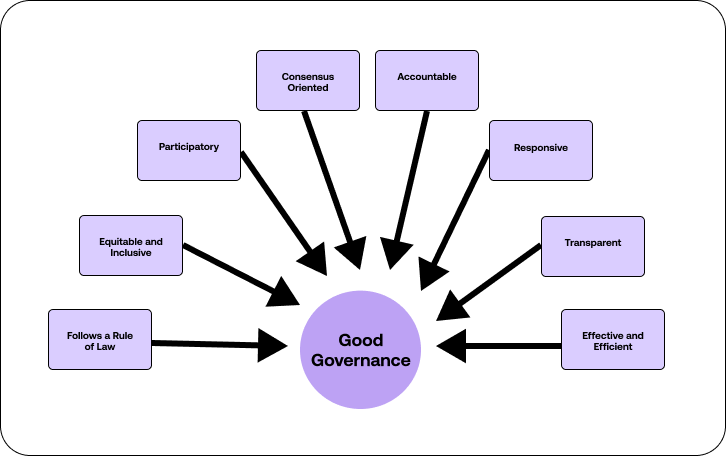In project management, having a strong governance structure is essential for ensuring the success of any initiative. A well-defined governance structure provides clarity, accountability, and transparency throughout the project lifecycle. It establishes clear decision-making processes and identifies the key players responsible for driving the project forward. In this article, we will explore the importance of a strong governance structure and highlight the key elements and advantages of implementing one.

Key Elements of an Effective Governance Structure
Ensuring Accountability and Transparency
One of the essential elements of a strong governance structure is ensuring accountability and transparency. This means that all project stakeholders are aware of their roles, responsibilities, and the expected outcomes. By clearly defining and communicating these expectations, project managers can hold individuals accountable for their actions and promote transparency in decision-making processes.
Accountability is crucial in project management as it ensures that every team member takes ownership of their tasks and delivers them on time. When everyone understands their responsibilities, it becomes easier to track progress and identify any gaps or bottlenecks. Additionally, accountability fosters a sense of commitment and dedication among team members, as they know that their contributions are being monitored and recognized.
Transparency, on the other hand, builds trust among team members and allows for open communication. When project stakeholders have access to relevant information and understand how decisions are made, they feel more confident in the project's direction. Transparency also encourages collaboration and alignment towards project goals, as team members can provide input and feedback based on a clear understanding of the project's objectives and constraints.
Establishing Clear Decision-Making Processes
In project management, making timely and effective decisions is crucial for keeping the project on track. An effective governance structure provides a framework for establishing clear decision-making processes. This framework outlines how decisions will be made, who will be involved in the decision-making process, and how information will be communicated.
When decision-making processes are clearly defined, project managers can ensure that decisions are made efficiently, considering different perspectives and minimizing delays or conflicts. By involving the right stakeholders at the right time, decisions can be based on a comprehensive understanding of the project's requirements and constraints.
Moreover, clear decision-making processes enable project managers to communicate decisions effectively. When everyone knows how and when decisions will be communicated, there is less ambiguity and confusion. This promotes transparency and accountability, as project stakeholders can track the progress of decisions and understand the rationale behind them.
Furthermore, a well-defined decision-making process allows for proper documentation and record-keeping. This is essential for future reference and evaluation, as it provides a historical record of decisions made and the reasoning behind them. It also helps in identifying patterns or trends in decision-making, which can be useful for improving future projects or addressing recurring issues.
Understanding the Key Players in a Governance Structure

The success of any project relies heavily on the individuals who make up the governance structure. Among these individuals, the board of directors and executive leadership play crucial roles in ensuring the project's success and alignment with organizational goals.
The Role of the Board of Directors
Within a governance structure, the board of directors holds a position of great importance. They are responsible for overseeing the project and ensuring that it remains in line with the organization's strategic objectives. With their wealth of expertise and experience, board members provide strategic guidance, make high-level decisions, and monitor the project's progress.
Board members bring a diverse range of skills and perspectives to the table, allowing them to assess the project from various angles and make informed decisions. Their involvement ensures that projects are executed in accordance with the organization's values, mission, and strategic objectives.
Furthermore, the board of directors acts as a crucial link between the project and the organization as a whole. They serve as advocates for the project, ensuring that it receives the necessary resources and support to succeed. By actively engaging with project stakeholders, the board fosters a sense of collaboration and ensures that all parties are working towards a common goal.
The Importance of Executive Leadership
Another key player in a governance structure is executive leadership. These individuals are responsible for providing direction, setting project priorities, and aligning resources to ensure successful project outcomes. Their role is pivotal in driving the project forward and achieving its intended results.
Effective executive leaders create a culture of accountability within the project team. They set clear expectations and hold team members responsible for their actions and deliverables. By fostering a sense of ownership and responsibility, executive leaders ensure that everyone is committed to the project's success.
Moreover, executive leaders play a critical role in facilitating collaboration among project teams. They encourage open communication, create opportunities for knowledge sharing, and promote a sense of unity among team members. By fostering a collaborative environment, executive leaders ensure that all stakeholders are engaged and working towards a common goal.
Executive leaders also act as advocates for the project within the organization. They communicate the project's importance and benefits to key stakeholders, gaining their support and involvement. With their influence and support, executive leaders drive successful project delivery and ensure that the project remains aligned with the organization's overall strategy.
The board of directors and executive leadership are key players in a governance structure. Their expertise, experience, and involvement are crucial in ensuring that projects are executed in line with organizational goals. By providing strategic guidance, setting project priorities, and fostering collaboration, these individuals drive successful project outcomes and contribute to the overall success of the organization.
Implementing a Successful Governance Structure
When implementing a governance structure, it is essential to follow best practices to ensure its effectiveness. Some key best practices include:
- Clearly define the project's goals and objectives: One of the fundamental best practices in designing and implementing a governance structure is to clearly define the project's goals and objectives. This step is crucial as it provides a clear direction for the project and ensures that all stakeholders are aligned with the desired outcomes. By defining the goals and objectives, the governance structure can be tailored to support the specific needs of the project.
- Identify and involve key stakeholders: Another critical best practice is to identify and involve key stakeholders in the governance structure. Key stakeholders are individuals or groups who have a vested interest in the project's success. By involving them in the governance structure, their perspectives and expertise can be leveraged to make informed decisions and drive the project forward.
- Establish communication channels and protocols: Effective communication is vital for the success of any governance structure. Establishing clear communication channels and protocols ensures that information flows efficiently between all stakeholders. This includes regular meetings, status updates, and documentation of decisions made. By having robust communication channels in place, potential roadblocks can be identified and resolved promptly, leading to smoother project execution.
- Define decision-making processes and responsibilities: A well-defined governance structure should include clear decision-making processes and responsibilities. This ensures that everyone understands their role in the decision-making process and that decisions are made in a timely and efficient manner. By defining decision-making processes, the governance structure can prevent delays and confusion, allowing projects to progress smoothly.
- Regularly review and evaluate the governance structure's performance: Continuous improvement is key to maintaining an effective governance structure. Regularly reviewing and evaluating the governance structure's performance allows for adjustments and refinements to be made as needed. By monitoring the structure's effectiveness, potential issues can be identified and addressed, leading to ongoing improvements in project management efficiency.
Advantages of a Well-Defined Governance Structure

Enhancing Organizational Efficiency and Effectiveness
A well-defined governance structure improves organizational efficiency and effectiveness. It enables streamlined communication, reduces redundant processes, and facilitates quicker decision-making. By clearly defining roles, responsibilities, and decision-making processes, project managers can eliminate confusion, avoid duplication of efforts, and ensure that resources are allocated efficiently. This promotes overall project efficiency and enhances the organization's ability to achieve its objectives.
Mitigating Risks and Ensuring Compliance
Another advantage of a strong governance structure is its ability to mitigate risks and ensure compliance. By establishing clear accountability and transparency, project managers can identify and address potential risks early on. Moreover, a well-defined governance structure ensures that projects adhere to relevant laws, regulations, and industry standards. Compliance with these requirements not only reduces legal and reputational risks but also creates a sound foundation for project success.
Where to go from here
A strong governance structure is crucial for successful project management. It provides a framework for accountability, transparency, and effective decision-making. Understanding the key elements and players in a governance structure, implementing best practices, and optimizing the structure can bring numerous advantages, including enhanced organizational efficiency, mitigated risks, and improved project outcomes. By prioritizing the establishment of a strong governance structure, project managers set their initiatives up for success and create a solid foundation for project delivery.
At Wednesday, we undertake projects that lead to the complete digital transformation of workflows. These projects have forced us to create strong governance structures that ensure each project is completed on time, without any compromise on outcome or customer experience. If you’re taking up a digital transformation or modernization endeavor, we might be a good fit. If you’d like to know more about our services, book a free consultation here.
Enjoyed the article? Join the ranks of elite C Execs who are already benefiting from LeadReads. Joins here.


.png)



